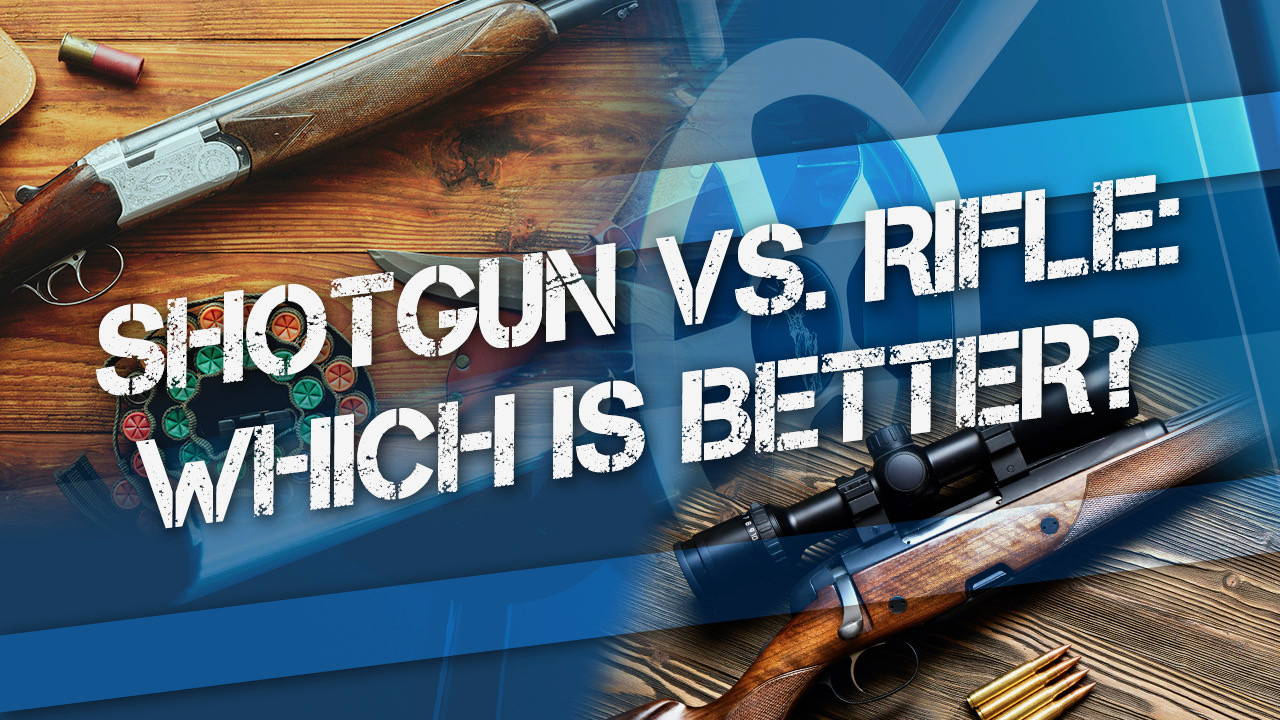As with many questions about “which X is better than what Y,” the proper response to this question is really another question: “Better for what?” Shotguns and rifles were developed for very different uses and excel in very different tasks. For bird hunting or shooting aerial targets, a shotgun is vastly superior. For precise target shooting or plinking at longer ranges, or for hunting larger game, the rifle is the clear winner.
However, we can address the question of which of these two firearms types might be better for home defense. Hopefully the discussion below will help shed some light on these firearms so you might make a more informed decision.
Shotguns vs. rifles for home defense
Both shotguns and rifles can be exceptionally effective in a home-defense role. Experts disagree on which platform is technically the most effective at “one-shot stops” against aggressors, but with proper ammunition and shot placement, both will likely do the job better than just about any typical home-defense handgun.
Advantages of rifles for home defense
Rifles have the advantage of very high speed projectiles, which cause “hydrostatic shock” and temporary wound stretch cavities in soft tissue which can disrupt organ and muscle tissue well away from the bullet’s path. This effect has been shown even when using standard FMJ (full metal jacket) ammunition in the ubiquitous caliber of 5.56 Nato/.223 Remington common to most “modern sporting rifles” or home-defense oriented AR-15 clones. Thus, your varmint rifle or fun gun might also be a top choice for a home defense firearm.
Rifles are more reliable generally than shotguns, though a high-quality self-defense shotgun will usually be quite reliable when well-maintained and loaded with cartridges it likes.
Rifles usually have a much greater ammunition capacity than shotguns. Even in “restricted” states that allow 10, 15, or 20 round capacity magazines maximum, that is usually more cartridges than a home-defense shotgun can hold, and a standard 30-round magazine holds up to 6 times more cartridges than a standard shotgun.
Furthermore, a semi-automatic “AR” rifle is much faster and easier to reload than a typical tube-fed home-defense shotgun. Even the relatively rare box-magazine-fed shotguns are usually a bit problematic to load and are generally not as reliable as variants with a typical tube magazine.
Although it’s unlikely that in a home-defense scenario a longer-distance shot will be required (or indeed justified), rifles are far more accurate over longer ranges than shotguns. In addition, since rifles only fire one projectile per shot, and very accurately, there may be less chance of a stray projectile that doesn’t impact the intended target, and which may be potentially dangerous to innocent people in your home or other homes nearby.
High-speed rifle cartridges are usually more capable of defeating soft body armor as well, in case your attacker is wearing it. Body armor that is rated for stopping handgun rounds often fails to stop 5.56/.223 rifle ammunition.
Another advantage of a rifle, particularly a semi-automatic rifle chambered in .223 Remington or 5.56 nato, is that recoil is negligible and is easily managed by younger or smaller-statured shooters. Shotguns can give quite a startling amount of recoil when loaded with effective defensive cartridges.
Advantages of shotguns for home defense
Though rifle bullets are very effective against human-sized targets, shotgun ammunition can be as well. The typical load of “double-aught” or 00 buckshot delivers 8 or 9 .33” lead balls to the target with each pull of the trigger. The amount of energy Buckshot is so named because it was designed for hunting larger game, such as deer (buck), but it is also devastatingly effective as a tactical or defensive cartridge.
When it comes to delivering energy to a soft target, the shotgun is king. A standard load of 12 gauge defensive buckshot hits with close to 1,500 ft/lbs of energy, compared to the 5.56 rifle which comes close in some loadings at 1,300 or less. A typical 9mm defensive handgun may deliver 350 ft/lbs, while a .45 ACP +P can get close to 500 ft/lbs, and some .357 magnum defensive loads can reach 600 ft/lbs if your barrel is long enough. However, all of those pale in comparison to a 12-gauge shotgun.
In addition, there is some evidence to suggest that the shotgun not only has more muzzle energy, but actually delivers more of that energy into a man-sized target, since each pellet doesn’t have as great a chance of passing completely through, like many rifle and handgun bullets might. If a projectile passes through a target, that obviously means it hasn’t delivered all of its energy into the target.
It could be argued that a standard defensive shotgun is simpler to learn and to operate than a typical home-defense rifle, and in a stressful situation, simpler is better. Shotguns with integral, tubular magazines don’t need separate box magazines that can be lost or damaged.
Though any firearm fired indoors will be extremely loud if the shooter isn’t wearing ear protection, a shotgun is generally not as obnoxiously loud and concussive as a rifle, particularly if the rifle is fitted with a compensator or muzzle brake common among a “tactical” or defensive AR-15. Those can be so loud as to be disorienting and even physically painful to the shooter when fired indoors in hallways or next to walls.
Shotgun or rifle for home defense: Which is easiest to use?
Though it’s a common gun-counter maxim that a pump-action shotgun is the simplest, easiest, and most reliable option for home defense, new or inexperienced shooters often have a lot of trouble understanding and operating a pump-action shotgun properly. The bolt release (or action bar lock lever, or slide release) mechanism can be very counterintuitive for newer or untrained shooters, and user-induced malfunctions are very common due to improper use of this as well as “short-shucking,” where the shooter fails to vigorously retract the slide fully rearward after each shot.
For this reason, many experts recommend a quality semi-automatic shotgun or rifle for defensive use, or even a break-action shotgun in some cases where absolute simplicity is paramount.
A note on “overpenetration”
Tests have shown that common defensive rounds from both shotguns and rifles will easily penetrate multiple walls, including exterior siding and insulation, and have sufficient energy to be lethal to anyone on the other side. In other words, defensive rifles and shotguns will probably shoot completely through a typical home. So it’s very important that you train often and well enough to ensure that any of your shots fired in defense hit the intended target. You are responsible for every projectile that exits your firearm’s barrel.
When loaded with specialized jacketed hollow point bullets intended for defensive use, a rifle becomes a little less likely to shoot completely through an attacker and still present a lethal threat to any innocent bystanders.
For much more information on this topic, including an examination of birdshot for defensive use, please read our article, “Why use a shotgun for home defense?”.
Whatever firearm you choose for home defense, keep it safe with Liberty
Since there are many variables and personal considerations that you must take into account when selecting the proper home-defense firearm for you in your unique situation, hopefully this article will be useful in helping you come to the right decision. Whatever you select, you should make sure to keep it securely stored when it is not under your direct control.
Liberty Safe is America’s #1 manufacturer of home and gun safes, and all our safes are built in America from American steel. If you decide a rifle or shotgun is the right choice for your defensive firearm, keep it safe and protected in a quality safe from Liberty. Click here to find a dealer near you!







